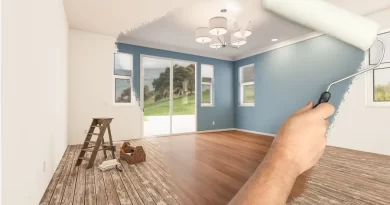The Innovative Approach In Concrete Formwork Making
Concrete has brought numerous advantages to the construction sector. It’s one of the oldest known building materials, and it’s certainly among the most durable. It’s a strong, long-lasting solution to countless construction needs. At the same time, it’s among the most versatile materials available in the construction sector. It can be used to create any number of structures and architectural elements. Recent innovations in concrete formwork making are helping construction companies take those advantages to new heights.
Permanent Concrete Formwork
One of the most noteworthy innovations in the sector is permanent concrete formwork. With conventional formwork, the molds are constructed. Then, concrete is poured into them and allowed to cure. From there, the formwork is removed.
When using permanent formwork, the molds are left in place. That eliminates much of the time and labor involved in the construction process. It also reduces waste and provides added structural integrity for the structures in which these molds are used. Some might argue that permanent formwork has been in use for quite some time, but when combined with other industry advancements, this concept brings even more benefits to the table.
Cutting-Edge Materials
Cutting-edge materials have also entered the mix. Traditional formwork is typically made of wood or steel. While those materials have their own advantages, newer, more advanced options are now available. Those include aluminum, engineered wood, and fiber-reinforced plastic. These materials are lighter and often more cost-effective than their predecessors. They can also provide added flexibility and strength.
Sustainability is another factor to consider with certain advanced materials. Some are recyclable or made of recycled materials. Others are designed to last longer and be reused to reduce waste and the need for raw materials. They’re helping to foster the green building movement and conserve resources for the future.
Technological Innovations
Technology likewise has a growing place in formwork and concrete construction. Smart sensors can be integrated into formwork for real-time internal monitoring. These systems can allow construction companies to remotely monitor temperature, moisture levels, and other factors during the curing process. That helps to ensure optimal quality in the finished product. Smart sensors and remote monitoring capabilities can also allow for ongoing assurance of strength, safety, and structural integrity in concrete long after construction is finished.
Building information modeling is also an increasingly important piece of the puzzle. Using BIM software leads to improved accuracy and efficiency in construction. It enables construction companies to plan ahead for potential challenges. It can also allow them to design and build formwork more effectively. In addition to those advancements, 3-D printing is bringing more design flexibility and accuracy to the formwork-building process. Both of these innovations can bring more versatility in structural design to the industry.
Taking Concrete Formwork Into the Future
Concrete is vital to the construction industry, and formwork is crucial for the use of concrete in construction. Numerous formwork innovations have been brought to the table over the years. Using cutting-edge materials in mold construction fosters cost-effectiveness, longevity, and sustainability among other advantages. That’s the case for single-use formwork, reusable molds, and permanent formwork alike.
An increased use of permanent formwork is reducing waste while also eliminating much of the time and labor involved in the construction process. Beyond that, advanced technology, such as remote monitoring, BIM software, and 3-D printing, is bringing even more improvements to the industry. In the future, automation, artificial intelligence, and other innovations are sure to take concrete formwork even further.




